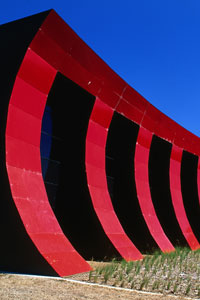Good-looking, refined and spectacular in spring, Canberra was little more than an aboriginal meeting point at the turn of the century. It wasn’t the obvious choice for Australia’s federal capital; rather, it was born out of compromise between Melbourne and Sydney. An opportunity to start anew, the city came to embody the hopes and aspirations of a newly independent nation.
An international design competition yielded an open, garden city centred on Lake Burley Griffin. Yet war and depression interrupted its development and it is perhaps only now truly coming into its own. Where Canberra once felt like a collection of loosely-knit suburbs, it is now a thriving city and cultural centre.
With a host of national institutions, museums and art collections, this has always been a paradise for the intellectual, and the nearby bush and rolling mountains are great for the outdoor lover; yet Canberra now also bosts a thriving music scene, with everything from Romance-era classical to electro-funk, and the downtown bars are rapidly becoming fashionable places to be.
Where to stay
The Park Hyatt is a popular choice, well-equipped for business travellers, but which receives a number of mixed reviews. The Crowne Plaza Hotel has a central location and a better reputation for service, while Hotel Realm is a modern and spacious alternative.
Where to eat
Sage restaurant is a great venue for contemporary Aussie food in a relaxing environment. The historical setting and fine wine list at the Ginger Room make for a memorable evening even before you get to the superb, contemporary menu.
What to see
The Australian War Memorial is a poignant museum that commemorates Australians who died for their country and explores the meaning of war. The National Gallery contains around 100,000 pieces of Aboriginal and Torres Strait Islander art, among other international works.





